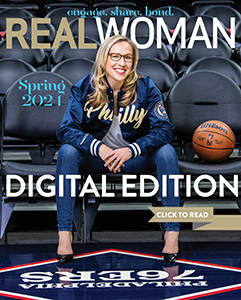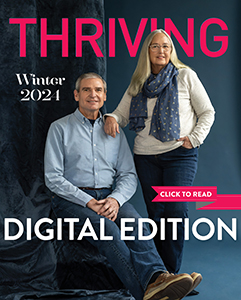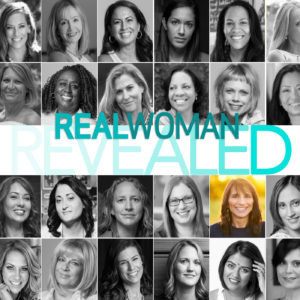Capital Health hired fellowship-trained breast surgeon Lisa Allen, M.D., to realize its vision of a Center for Comprehensive Breast Care that would provide 360-degree treatment. Under her leadership, they made it happen. She shares why being a breast surgeon became her dream—and her reality.
I’ve known since I was 8 that I wanted to be a doctor. Initially I thought I wanted to be a plastic surgeon, but I spent a month in Syracuse working with a reconstructive surgeon who only did breast reconstruction, which is very rare. At the end of that rotation, I realized it wasn’t so much the reconstruction I loved—it was taking care of the breast cancer patients. Women are working and taking care of their kids and their families, even through their treatments, and I found that extraordinarily empowering. That’s when I knew I wanted to be the person who was there for them from the beginning.
Coming from my fellowship at MD Anderson in Texas, I had a lot of opportunities, but I wanted to go somewhere where I’d make a difference. I had been in touch with [plastic and reconstructive surgeon] Dr. Gary Tuma toward the beginning when I started looking, and he told me what Capital Health was doing. They wanted to create a place where patients could go for comprehensive breast care. Instead of having their surgeon here, their oncologist over here, the goal was to have everything in one place, so it was convenient, easy, and comfortable for the patients. And that’s what we did. From the moment patients walk in the door, they don’t need to go anywhere else to get care. We are making sure they have direct patient care, support services, accessory services like the wigs and postsurgical garments, nutrition, and support groups.
I became close with the women who were in my breast fellowship program at MD Anderson. What I found is that they were exactly like me. You have all these women who go into this really gruff field of surgery, and it sort of auto-selects out people who want to do breast surgery and are kind and compassionate and want to do more than just be in the operating room. You have to. You can’t be a breast surgeon and not have that part of you.
Being an emotional support to my patients isn’t something I even think about. It’s just something I do. I think it’s why I wanted to be a doctor when I was 8, because I wanted to help everybody. I tend to be the person in the room who, if you’re freaking out, I usually say “It’s not that bad.” I do it with my family and my friends—I’m a calming force. So for me, being that patient’s doctor is not just about being her doctor, it’s about being the same person I am outside of the hospital when I’m with her. It’s about bringing the compassion I have in life to the profession.
In the past 10-15 years, there has been a huge surge of prophylactic mastectomies, or removal of the non-cancerous breast. There are two reasons behind it. The first is an emotional decision by the patient who just wants to remove both breasts for fear of cancer eventually developing in the non-affected breast. Is it an emotional decision and a choice? Absolutely, but it’s really about peace of mind, and that’s so important too. The second reason is that reconstruction has become so good. A lot of times women who may not have even considered augmenting their breasts meet with a reconstructive surgeon and see what they can look like and decide to do it.
When it’s your breasts, there is so much more involved than just having cancer. It’s your sexuality, so it becomes this emotional thing. That’s not to say other cancers aren’t emotional, but breast cancer somehow becomes part of your identity. Breasts represent your womanhood, so losing them or having cancer in them just really changes things. It’s just different than losing your gallbladder or your colon.
The future of treatment is in targeted therapy—becoming more and more minimally invasive. We went from doing big mastectomies to skin-sparing mastectomies to nipple-sparing mastectomies. So now they’re trying to figure out how to do nipple-sparing mastectomies with scopes and surgery without cutting, using freezing and radiofrequency.
The most rewarding thing for me is getting to see my patients after treatment, when they come back. From the get-go, that’s what drove me into becoming a breast surgeon, seeing them at the end, back in their lives and getting back to normal. Breast cancer changes people. Some of my patients are not as sensitive to things and don’t get as upset and go through life not as angry as they were. Seeing those changes and watching them become a new person after cancer is just amazing, and it really gets to me.
3 Questions for Dr. Allen
Is there a better option than a mammogram? A lot of people will come in and say I want magnetic resonance imaging (MRI). An MRI is really good at picking up cancer, but its also good at picking up stuff that’s not cancer. You end up getting a lot of biopsies. The perfect test just does not exist. Mammograms are the best thing we have as a screening tool.
Do you recommend women begin getting annual mammograms at 40? Yes. We still encourage you to have yearly mammograms starting at 40. It’s all about getting diagnosed early. It gives you more options.
Recent studies have said women don’t benefit from having mammograms as early as 40. Do you disagree? I disagree. Here’s why. There are two major studies that say mammograms are overused—a study by the U.S. Task Force, a government-run study. They looked at the cost of mammogram, from the standpoint that you need to spend a lot of money to find one cancer in women between the ages of 40 and 50, but to that one woman, that’s going to make the difference of life and death. The second was a Canadian study, which only looked at death from cancer, but they’re not looked at treatment. So if I diagnose somebody with in situ, or noninvasive cancer, and a lumpectomy and radiation and go on a anti-estrogen pill, that’s a much better outcome than someone who is identified with a 2 cm tumor and positive nodes, needs chemotherapy, and needs a mastectomy. There are better options available the earlier you are diagnosed.









